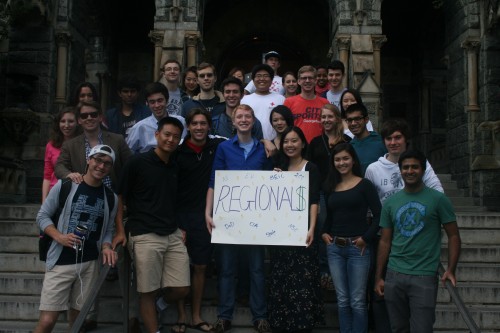Last year, the North American Invitational Model United Nations conference inaugurated its newest organ, dubbed the U.S. National Security Apparatus (NSA), to grand fanfare. Throughout the four days of the conference, the organ afforded delegates an intensive investigation of and participation in the making of U.S. foreign policy at the highest of levels and the grandest of scales. Set during the initial days of the War on Terrorism, the five committees—the National Security Council, State Department, Central Command, Intelligence Community, and Senate—chartered a new course for the United States in one of the most controversial periods in the country’s recent history.
This year, conference executives chose to continue with the fundamentals of the NSA model, with a slight shakeup. To celebrate NAIMUN’s fiftieth anniversary, the NSA committees will be incorporated into the traditional Regionals organ. As the biggest overhaul in our organ’s history, this new dynamic has generated tremendous excitement, but it has also introduced new challenges to promoting organ cohesion. The addition of the NSA has created a bifurcated structure between this year’s four NSA committees—the National Security Council, State Department, Department of Defense, and Central Intelligence Agency—alongside the more traditional Regionals cast of characters, comprising the Second Continental Congress, African Union, British East India Company, and Lisbon Treaty Negotiations.
Given the clear substantive divisions within the organ, the temptation is high to divide into two smaller de facto organs, one based around the NSA and the other composed of the usual Regionals committees, each with one member of the Regionals senior staff duo to serve as undersecretary general. But Amy does not want to be the USG of Regionals-lite; Andrew does not want to be the USG of the National Security Apparatus-lite. One of us may naturally incline towards one committee or the other, but in the final tally we are both USGs of all of Regionals, reflecting our belief that each committee, each staffer makes an inimitable contribution to something larger than ourselves.
That something is the “NAIMUN family,” a concept that veteran participants will often use when describing their time at NAIMUN. Simple yet elegant, those two words capture one of the primary reasons why Georgetown students engage in Model United Nations. Model UN provides tremendous educational value, but perhaps the activity’s true worth lies in its uncanny knack for sparking incredible friendships. Weeks, months, even years after the conference has ended, former staffers will study together in the library, break bread together in the dining hall, and socialize together in the International Relations Club. Where once had been chairs and crisis managers, brought together for the sole purpose of running a simulation, will now be friends and roommates, individuals who interact with one another not because they are forced to do so but because they choose to do so.
Nurturing such camaraderie is no easy task. But once the process begins, nudged along by an organizational culture that prizes the importance of every single person, the odd bit of sentimental yet honest wordsmithing, an afternoon of gorging on s’mores and cider as a team, and a host of other little things along the way, it gathers momentum and transforms into an unstoppable force. If college is as much about the people that we meet as the knowledge that we learn, then NAIMUN is that quintessential college experience. And by keeping our organ strongly united, in one piece and not two, we open the arms of the NAIMUN family to as many people as we can.
Andrew Scott
USG of Regionals, NAIMUN 50
Amy Liu
dUSG of Regionals, NAIMUN 50



